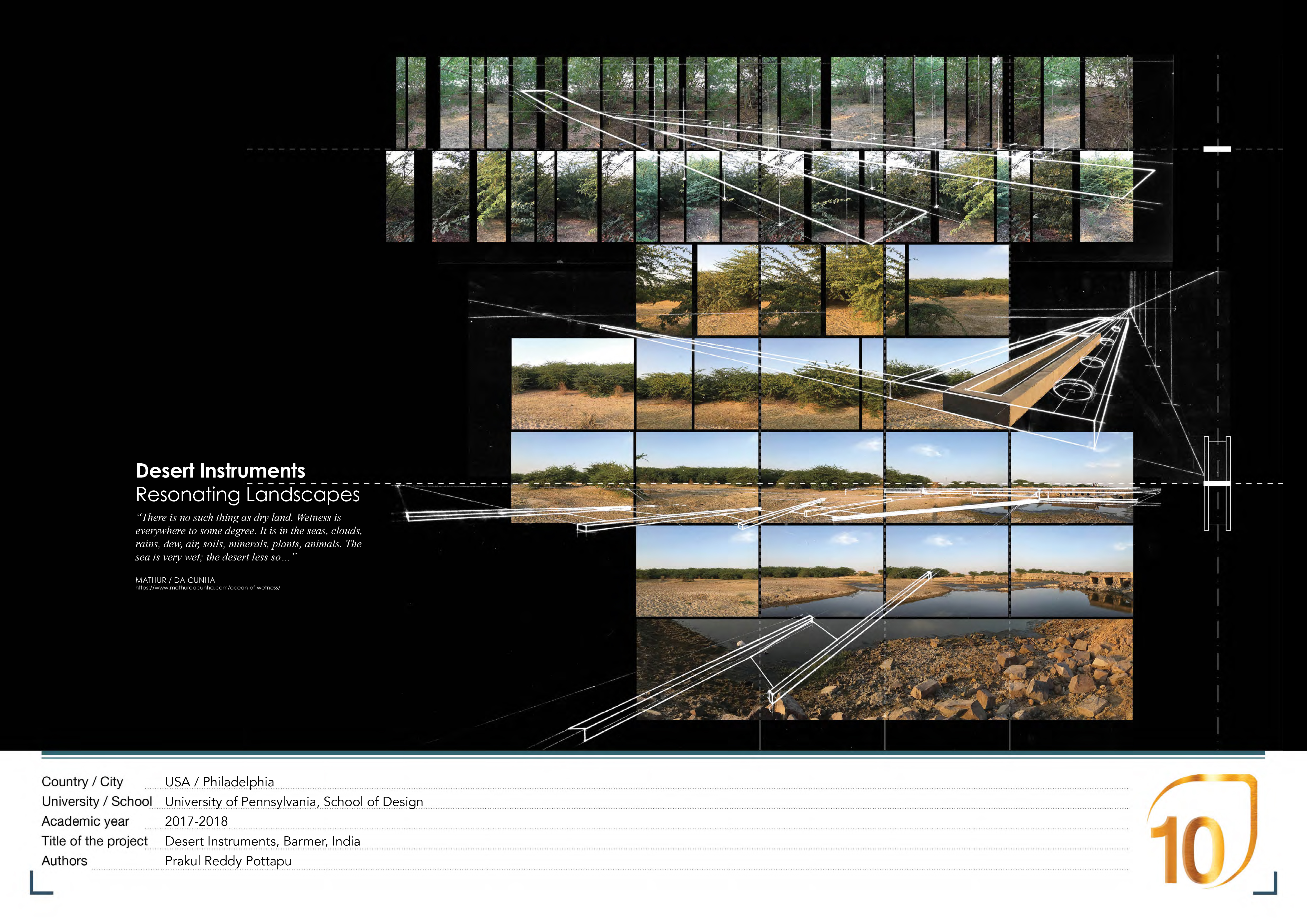
Desert Instruments, Barmer, India
Studio 702: Imprints / Crossings - Landscapes behind the scene
University of Pennsylvania School of Design
Although deserts are commonly perceived as empty or places of scarcity, the Thar desert region in India is a culturally vibrant place. Here imprints of its rich traditional practices of habitation – salt production, pottery, music, block printing and dyeing – are visible in the landscape to the discerning eye. Investigating these practices through the idea of imprints, time based cyanotype prints of a performance by the famous Langa musicians were created. This led to a vocabulary of exposure and intensity that allowed one to look at this landscape through a new lens. The Sindhi Saarangi, a string instruments used specifically by the Langa musicians, consists of three strings that are played with a bow and 19 sympathetic strings that resonate to produce a richer sound. A similar instrument-like sensitivity is brought to the design of a crossing across the Luni riverbed near a town called Tilwara known for its Mallinath Mela – a horse and cattle fair, a sandy plane where many practices once gathered.
The existing crossing across the river bed is a road that is constructed every year after the monsoon washes the old one away. The design proposes to anchor the two ends of the crossing with “instruments” which when played by the monsoon resonate throughout the year, gathering cultural practices and events. Tanks to hold monsoon rain, gravel channels to redirect overflow and cleanse waste water, water troughs to be appropriated by dyers, overflow bridges and material wedges to hold water for cultivation come together to form one of the two anchoring instruments designed for the site.
